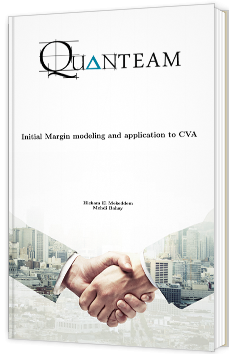

Tout comprendre de la méthode de calcul de l’Initial Margin selon le modèle de marge initiale standard (SIMM).

"For the purpose of protecting counterparties to non centrally cleared OTC derivatives against the potential risk of default by the other counterparty, the European Market Infrastructure Regulation (EMIR) states that the parties should make a bilateral margin exchange. The first component of this bilateral margin is the Variation Margin (VM) that covers the daily change in a contract’s or portfolio’s present value. The second component is the Initial Margin (IM) which protects the counterparties against potential losses arising from future changes in the mark-tomarket value of the contract during the time it takes to close out or replace the position in the event that the counterparty default. IM is typically computed based on a 99% Value at Risk at Margin Period of Risk of at least 10 days.
Financial institutions traded in the OTC derivatives market should take into account, in their prices, the counterparty credit risk which is measured by means of Credit Value Adjustment (CVA). The calculation of CVA requires the modeling of credit exposure at each time in the lifetime of the OTC derivatives portfolio. In the context of margin exchange, the expression of the credit exposure includes the value of the collateral that is the sum of VM and IM. At the present time, most banks use a value of IM that is equal to the IM held currently and flat out to the longest maturity in the portfolio. Obviously this method can not capture the changes in the IM level with time and consequently a model should be set up to get the dynamic of IM throughout the simulation time."